Regional managers Alex Esteves and Ryan Darby have a conversation about how managers and board members can more effectively communicate with residents and homeowners in their communities.
Subscribe: Apple Podcasts | Spotify | RSS
Read Transcript
[00:00:26.290] – Matthew Holbrook
Today our question is, what do you need to know about communication in an HOA? Joining me today, we have Ryan Darby and Alex Esteves, regional managers for Action Property Management. Appreciate you guys being a part of this conversation. When we talk about communication, what’s the first thing that comes to your mind with HOAs and communication?
[00:00:50.850] – Alex Esteves
Open Meeting Act.
[00:00:51.980] – Matthew Holbrook
Open Meeting Act. All right. We have to have board meetings in a certain way that homeowners can be a part of and participate in, even through open forum. What else?
[00:01:04.470] – Ryan Darby
Different delivery methods for different types of communications. There’s no one right way to communicate everything. Depending on what you’re communicating about requires a phone call, an email, a letter. It all is situationally based, and it’s up to the manager to make sure they’re aware of the best mode to communicate or what Civil Code requires.
[00:01:26.620] – Matthew Holbrook
I think that’s a super important consideration that we need to always be thinking through. What’s the best mode? Sometimes the answer is multiple ways, right?
[00:01:40.220] – Alex Esteves
Absolutely.
[00:01:41.140] – Matthew Holbrook
So I know the two of you have different communication styles. Alex, your preference in communication, when you have the choice, is how?
[00:01:51.630] – Alex Esteves
Because I like to document everything, I prefer to email, although I’m learning that sometimes the email can be the follow-up and not the initial point of contact. That goes a lot further than email.
[00:02:05.660] – Matthew Holbrook
And Ryan, you’re more of a phone call or face-to-face kind of guy?
[00:02:09.850] – Ryan Darby
I’m much more of a phone call person. I like the communication aspect of it and making sure that they understand. But it’s by far not the most effective way if you’re trying to do mass communication because you’re not going to want to call 190 homeowners or to have that personal communication about how they feel about the road project. There’s a time and a place for each way of using it, and I tend to be more on a one-on-one basis, it’s better to pick up the phone and have that phone conversation.
[00:02:45.650] – Ryan Darby
What I find is that they both understand, let’s just call it a violation. They’ll understand what the violation is, but also why the HOA has that there. It seems more and more often that homeowners, and even some board members, assume that the rules are there because a rule had to be created. But most of the time, the rules are created in response to something that happened that the community doesn’t want to have happen again.
[00:03:17.210] – Matthew Holbrook
So I think maybe one of the guidelines, as we’re talking about communication, that communication should have, within the context of HOAs, an educational component to it whenever possible. Would that be a fair thing to say?
[00:03:30.370] – Ryan Darby
Yes.
[00:03:31.030] – Alex Esteves
Yes.
[00:03:31.490] – Matthew Holbrook
Oftentimes people are buying into an HOA, and they have no idea what an HOA is. In fact, we have an Action team member here who started off as a homeowner in one of our associations. She often tells the story that she got a letter one day from HOA and she didn’t know who that was. And so in the process of that education, she actually came to work at Action and has been here for a long time.
[00:03:59.810] – Matthew Holbrook
But we want to make sure that we’re looking at that as an opportunity to educate wherever possible in whatever the mode is. That’s an important consideration. We need to keep in mind the difference between written and verbal communication. With verbal, you can do that one-on-one education a lot more effectively than you can in writing, oftentimes. You can express empathy much more effectively verbally. But then on the writing side, then that’s where you have your documentation, and you can maybe get more clarity because you can be specific, and people can go back and reread and look at those things.
[00:04:40.170] – Matthew Holbrook
We hear often when we are talking to prospective clients, to associations not yet managed by Action, we hear complaints often about, hey, our association, we’re really struggling with communication. What do you think is driving that? What do associations, what do board members mean when they say communication is one of our primary concerns?
[00:05:07.390] – Alex Esteves
In the portfolio management side, a lot of the times when I hear those complaints with people that are engaging us, is that they simply don’t hear from their manager. Their manager is overloaded. They have a lot going on, so it’ll be a week or two before they receive a response to an email. Again, generally what I hear on that front is that, that they’re simply not hearing from their manager.
[00:05:31.690] – Alex Esteves
On the homeowner side, what I hear is, “I did not know about this project. I did not receive notice. I got the vendor tag from the vendor before he came and needed to get access to my unit.” They didn’t get that letter on the front end. They didn’t get the newsletters. They didn’t get the e-blasts, where ultimately those things could have really saved us some time had we been able to get that out to the homeowners.
[00:05:56.930] – Matthew Holbrook
So there’s something to be said about managers to be responsive. One, they need to care would be a starting point. They need to prioritize that. Secondly, they need to not be overloaded with whatever they are assigned in their portfolio. Or if it’s an on-site situation, they need to make sure that there is adequate support team around them so that they can be as responsive as what the expectation would be.
[00:06:26.090] – Matthew Holbrook
And then third, they need to have the resources, whether it be technology or other aspects, so that they can be as efficient as possible and have that bandwidth to be able to communicate in that timely way that the homeowners are looking for. That becomes a really important part of the equation. Anything else that you would add on that, Ryan?
[00:06:53.070] – Ryan Darby
Well, let’s break it down from big projects, because big projects seems to be where a lot of the confusion comes from with homeowners. Let’s call it a slurry seal project, where they’re putting slurry seal over the roads, and homeowners and board members or anyone else in the community can’t be walking on the road. When there’s a project that involves closing access to homes, garages, that could also cause damage to the other common area elements if, let’s just say, someone walks across the wet slurry seal. The more communication that the manager does and the management company does, the better.
[00:07:37.180] – Ryan Darby
That could be email blasts, a letter, posting on the front doors, reaching out to particular board members to make sure that they talk to their courtyard. Even with all of those different types of communications, there’s still going to be homeowners or residents that state, “We never got the notice. It wasn’t on the front door. We didn’t get in the mail. We didn’t get your email. It was in the spam.” So it’s always important to be as communicative as possible, but knowing that you still might not reach every single person in the community.
[00:08:13.670] – Matthew Holbrook
We need to face the reality that if you’re not a board member and you’re not part of the management company, the HOA is probably not in your top 100 most important priorities in life.
[00:08:24.390] – Alex Esteves
You don’t say.
[00:08:27.490] – Matthew Holbrook
For most people, it’s just not going to register as something that’s really significant until there’s a problem. And so it’s our goal to make sure that we’re communicating in such a way that it never becomes that problem. Whether it be through educating or just finding as many different ways to communicate as possible, to make sure that somehow we break through the clutter of the noise that people can hear what they need to know about and then be able to act on that. That becomes really important.
[00:09:00.780] – Matthew Holbrook
I think as we’re looking at these different communication aspects, we need to make sure that team members are not overloaded, that they have the resources to be able to respond and respond quickly, that we need to make sure there’s always an educational component, or at least the thought of how do I educate somebody? There needs to be a variety of ways to communicate so that we can break through the clutter of the noise that keeps people from hearing what they need to hear. I think all of those are important considerations.
[00:09:34.990] – Matthew Holbrook
I think it’s also important that managers come back over and over again and think about the concept of empathy. Homeowners want to know that you empathize with whatever their situation is. And a manager or somebody in customer service or community care or whatever it might be, might be talking to hundreds of people a week, and the stories can kind of all blend together. But for whoever is calling, whoever is on the other end of the email, it may not be a big issue to them 99% of the time, but now this is an issue, and they need to know that you understand that it’s a big issue for them at this point. And so we need to be able to express empathy on a regular basis.
[00:10:23.590] – Ryan Darby
Well, that’s a big important part of when you’re communicating, let’s just call it a violation even. It’s really important to understand why they did the violation. Let’s say they were moving in after seven o’clock and there’s a hard 7:00 cutoff. The movers could’ve been late. We’ve all been there where the mover said they’d be there at 10:00, and they show up at noon or one o’clock. And there were supposed to be four people, and there was only two when they got there.
[00:10:48.230] – Ryan Darby
So it’s important to understand why they caused the violation. It could be as simple as, well, I didn’t know there was a rule. Very wide variety of causes of the violation, but understanding it and making sure that, at a minimum, they know not to do it again and why is very important. That can’t be described in a letter or an email. It gets lost in the weeds.
[00:11:15.300] – Alex Esteves
That’s where I’m learning that a phone call goes a long way. We project when we read an email, depending on which mood we’re in, what mood we think that the writer is in, and that phone call does go a long way on those escalated issues.
[00:11:31.860] – Matthew Holbrook
I had a situation the other day where, not necessarily related to HOAs, but I was multitasking. And in the middle of doing multiple things at once, I was responding to a text from somebody, and I just responded really quickly while my attention was elsewhere. Later, I looked at the text and I was like, boy, it sounded like I was angry and passive aggressive. That was not the tone I intended to send at all. But that happens when we communicate in writing.
[00:12:02.270] – Matthew Holbrook
I think combining that, and you alluded to this at the beginning, Alex, sometimes maybe there’s a personal touch to communication, but there is an importance to the documentation, and so maybe you follow it up with an email or a letter to make sure you have that documentation. I would also point out that proactive communication can actually save time in the long run. And so where we can identify opportunities to proactively educate, to proactively communicate, it may take more work upfront, but it can save you a whole lot of headache in the long run. And that’s true for managers, for board members, and so we want to encourage that.
[00:12:42.790] – Matthew Holbrook
From a board member standpoint, doing those town hall meetings where you know there’s a hot topic coming up, do that one town hall. Take the hour or so to communicate with residents about something that might be that hot topic, and save yourself the headache of having the next four open forums dominated about the discussion on this, and your manager being inundated with phone calls and dealing with emails and agenda items. That’s the kind of thing where if you do something upfront proactively, you can save a lot of the communication headache on the back end.
[00:13:22.800] – Ryan Darby
We talked about calling and emails, but town halls are a really effective way to communicate community changes or community projects. One of my communities, whenever we do a big project, we have a two-day town hall where homeowners can come to either one of them and get all of the information that they need about the project. We actually found that then all those homeowners that attend, they disseminate that information to the other homeowners who weren’t necessarily at the meeting or couldn’t make it. That actually has been, for major projects, a excellent way to get the information distributed, even more so than email blasts, mailers. It really gets the community involved and understand the need for the project.
[00:14:13.420] – Alex Esteves
Same or similar to mass communication when it comes to large projects. No board member wants to be at a hearing where 20 people drove across the slurry, where an extra newsletter would’ve been able to help with those numbers or an e-blast would’ve notified people. Ultimately, too, for the client, for the board, it’s really helpful in an escalated issue where there is a hearing or a member discipline issue for the board to be able to speak up and say, “No, the manager did send three, four newsletters. The manager did send an e-blast. The manager did have the vendor put cones out.”
[00:14:49.310] – Alex Esteves
Those are the ways that as managers and as the agent, we’re able to add value to the board and really save them, like you said, Matthew, the long meetings or the escalated issues. It may take a little bit longer on the front end to get those emails out, but how many people would love not to get towed? Or how many people would love not to have that $1,200 reimbursement that they have to pay now for the slurry that they drove over? So ultimately it’s a win-win overall.
[00:15:15.200] – Ryan Darby
But it also gives the board the ability of, “Well, did you get the email blast? No. Did you get the notice I personally posted on your door? No.” The more modes of communication that you provide on large things, the more ammo the board has to say, “Well, we attempted to communicate you in every single way, shape, and form, outside of personally calling each homeowner.” It really gives the board a lot of power with the more communications you do.
[00:15:48.250] – Matthew Holbrook
And the goal is to connect the dots. To actually reach the homeowners, reach the residents, make the communication successful, and really cultivate that better-informed, understanding, educated community where people are buying in to what’s happening, and it’s going to create a much more thriving environment.
[00:16:14.450] – Matthew Holbrook
The last note that I would give, and this medium speaks to it. In our world today, video is a great way to communicate. I don’t think that’s leveraged enough by managers or board members with their communities. But I think residents, they wouldn’t mind seeing video from their managers or from their board president communicating certain topics. That’s just another way to communicate.
[00:16:43.400] – Matthew Holbrook
You want to still do the emails and the letters, and obviously there are certain Civil Code required mailings and so forth, but when you can put a face to the communication, it humanizes what’s happening in the community. And at the end of the day, we’re talking about where people live. We’re talking about their homes. That human component is important, and video can help to bridge that in certain ways, so it’s worth thinking about for managers, for board members. There may be times when using video communication can be helpful.
[00:17:19.400] – Alex Esteves
If COVID taught us anything, it’s that, right? That’s the one positive that we have here.
[00:17:25.060] – Matthew Holbrook
Well, thank you guys very much. I appreciate your input. And that concludes this episode of The Uncommon Area. We would just encourage you to check out our library of other videos where we address other topics that are relevant and important to the operation of homeowners associations.





